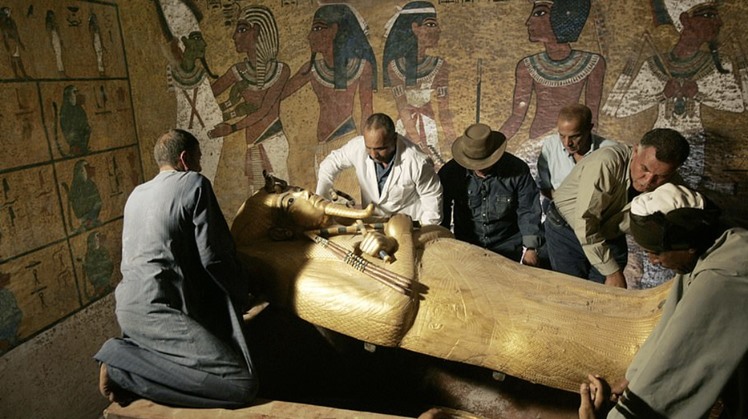Egyptologists said that Tutankhamun was an experienced warrior and not a sick king, as is common in historical folklore, which confirms that the most famous king of Egypt was weak and deformed.
He was buried with about 130 whole and fragmented sticks of various shapes and designs which have been suggested as walking sticks to aid his movement, reinforcing the idea that he had some degree of disability.
But three experts in Egyptology told the Cheltenham Science Festival in Britain this week that such an assumption may be wrong, according to the British Daily Mail, as Egyptologist Sophia Aziz said: “I studied Tutankhamun. I personally do not think there was any evidence that he was disabled.” ".
Egyptologist Sophia Aziz said that the "compressed foot" that appeared in the mummy of Tutankhamun may in fact have resulted during the mummification process, as applying resin and tight bandages can distort the shape of the foot.
She added that there was a missing middle bone in his second left toe, possibly after his remains were moved to a sandbox, or simply taken by someone as a souvenir.
And the Egyptologist, who studied more than 50 mummies, continued: “His legs were well aligned, if he had a deformity, and if he had a foot disability, he would have difficulty walking, but the long bones show no evidence of this.”
Dr Campbell Price, curator of the Egypt Museum in Manchester, who also spoke about Tutankhamun at the Science Festival, supports the idea that the idea that the boy king was ill is likely a myth.
"It's a fresh perspective on a 100-year-old story," said Raksha Dev, honorary chair of the Council for British Archeology, who chaired the Science Festival's lecture on the boy king.
Tutankhamun is considered one of the most famous pharaohs because his body was preserved for nearly 3,000 years after his death, without the tomb being plundered by grave robbers like many other pharaohs.
The tomb was discovered by archaeologist Howard Carter in 1922 and the tomb revealed that he became pharaoh in 1336 BC at the age of only nine before dying suddenly at the age of nineteen.
 Sun, Jun. 11, 2023
Sun, Jun. 11, 2023